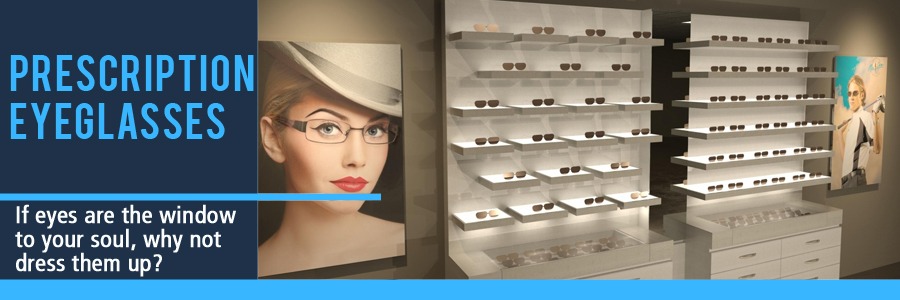
Personalized Eyewear Consultation by Appointment Only (215) 443-7706
- Home
- About
- Products
- Services
- Lens Lab
- Vision Care
- Newsletter
- Contact Us
Menu- Home
- About
- » Doug Wohl
- » Awards
- » Reviews
- Products
- » Bifocals
- » Computer Glasses
- » » Computer Vision Syndrome - Digital Eye Strain
- » Contact Lenses
- » » Are Contacts Right For You
- » » Guidelines for Contacts Wear and Care
- » » Instructions for Soft Contacts
- » Eyeglass Frames
- » » Frame Guide - Frame Shape and Face Shape
- » » Frame Materials
- » » Eyewear Maintenance
- » » Makeup Tips When Wearing Glasses
- » » Wiley X Eyewear Frames
- » Children Eyeglasses
- » » Eyewear for Babies and Young Children 0-5 Years Old
- » » Kids Corner
- » » 10 Tips for Buying Glasses for Children
- » Occupational Eyeglasses
- » Prescription Lenses
- » » Lens Coatings and Tints
- » » » Anti Reflective Coating
- » » Replacement Lens Options
- » Progressives
- » Readers
- » Safety Glasses
- » » Eye Injuries that Could be Prevented with Safety Glasses
- » » Prescription Safety Eye Glass Feature Guide
- » Single Vision Eyeglasses
- » Sports Eyewear
- » Sunglasses
- » » UV Eye Safety
- Services
- » Eye and Vision Exam
- » » Eye and Vision Problems
- » » Glaucoma Test
- » » Vision Refraction
- » Contact Lens Exam and Fitting
- » Eyeglass Repair
- Lens Lab
- Vision Care
- » Cornea
- » Detached Retina
- » Diabetic Retinopathy
- » Dry Eyes
- » Eye and Vision Conditions
- » Fun Eye Facts
- » Eye Function and Parts Explained
- » FAQ
- » Macular Degeneration
- » Makeup Causing Eye Damage
- » Medication Side Effects to Vision
- » Optic Nerve Damage
- » Optical Terms and Definitions
- » Red Eye
- » Retina Damage
- Newsletter
- » Blue Light Blocker Glasses
- » Buying Glasses Online
- » Covid-19 Safety Practices
- Contact Us
Prescription Lenses
Lenses are the most important part of your prescription eyeglasses. You can face an overwhelming challenge when it is time to choose your lens type for your prescription glasses.
Wohl opticians explain the different lens formats for you, whether it is single vision, bifocal, trifocal or progressive. If readers or computer glasses are warranted, we will customize the vision range that will work perfectly for you whether for reading a book, using a computer, working on a tablet computer or looking at your cell phone.
Wohl Optics is well versed in designing and manufacturing occupational eyeglasses for people working with laptops or computers, musicians, plumbers, golfers and welders whose vision needs are not within customary range.
Lens selection decisions are key to how well you will see. We will tailor your lens selection to your individual needs, not just your prescription. At Wohl Optics we’ll ask about your lifestyle, discuss your options and help you find the very best solution for your prescription lenses.
After frame selection or if we replace prescription lenses in your existing frame, we have to work together to choose eyeglass lens coatings and tints.
- Single Vision Lenses: Set for only ONE single viewing distance, which may be near, intermediate or distance. It is not uncommon to have single vision lenses for use as in workplace eyeglasses (used in sports, by musicians, in hobbies, computer glasses).
- Progressive Lenses: These have varying vision from distance to closeup reading, so you can enjoy the convenience of not having to take your glasses on and off frequently. You can view all distances in one lens. Progressives provide a smooth, gradual change in lens strength for seeing well at any distance. Consider them if you need glasses for distance and reading and find the split screen of bifocals or trifocals uncomfortable.
- Bifocal Lenses: Bifocals are sectioned into two distinct parts, which give the user clear distance and near (generally), with no transition or correction in between.
- Active Sport Lenses: Much thinner and lighter than ordinary plastic lenses, these have ten times more impact resistance than standard lenses and screen out 99.9% of the sun’s harmful UV rays. Recommended for children and safety glasses, or those who are a little tougher on their glasses.
- High Index Lenses: Ideal for strong prescriptions but without the bulk of the thickness, feature an anti-reflective coating and provide 99.9% UV protection.
- Plastic Lenses: Standard lenses that can be given an anti-reflective coating to screen out sun harmful rays. With ordinary plastic lenses, a strong prescription can result in a thicker, lens. In contrast, high-index lens material will reduce lens thickness for greater comfort and a better appearance.
Wohl Optics specializes in high definition digital lenses. They are ultra-thin and the hardest and most scratch resistant non-glare lenses. When is comes to lens selection, the expert opticians at Wohl Optics are prepared to help you select the best lens design, material treatments, and technology for your individual needs, prescription and budget.
No matter your age or vision requirements, Wohl Optics offers lens material and coating solutions to make sure you have high quality vision from your prescription lenses. From computer lenses to single vision lenses, to progressive lenses and occupational eyeglasses, we provide you the best vision technology for your eyes and wallet.
Because choosing your replacement lenses for glasses is such an important decision, we will give you as much information as possible and help you decide which options are best for you.
Glass Lenses
In relation to newer materials, glass is the heaviest but also THE most scratch resistant of all lens materials. Not only do glass surfaces highly resist the degrading scatter of fine scratches, they are also immune to the effects of contact and exposure to household solvents such as alcohol, acetone or the caustic pH of common cleaning agents, including oven and wheel cleaners. And no matter how you choose to clean them, glass lenses do not need the careful approach required of other materials. In fact, glass lenses stored without a case will, with just a few quick wipes, look like a million bucks when the return to duty calls.
Glass Lens Advantages
- Most scratch resistant of all lenses. No need for added scratch protection coatings.
- Optical clarity is excellent.
- Wohl Optics does all edging for glass lenses in-house.
Glass Lens Disadvantages
- Heavy
- Glass is the least impact resistant of all lens materials.
- Glass offers very little protection against harmful UV rays, which can destroy your eyes. We can coat them for UV, however.
- Additional UV coating needs to be applied to make glass acceptable for sunglass use.
CR-39 Lenses
The most common optical polymer in the ophthalmic field. CR-39 lenses revolutionized the optical industry when they were first introduced in the 1940s. These lenses are half as heavy as glass, but far less likely to shatter. Plastic can be uniformly tinted to meet your needs. However, the disadvantage is that the CR-39 material is 20% - 35% thicker than polycarbonate or high index plastic lenses.
Plastic (CR-39) Lens Advantages
- The CR-39 prescription lens material provides very little distortion - more than glass but less than polycarbonate.
- CR-39 is more lightweight and thinner than glass- comfortable to wear.
- More ore impact resistant but it may still break and shatter upon impact. Not recommended for active sports.
Plastic (CR-39) Lens Disadvantages
- 20%-35% thicker than polycarbonate or high index plastic lenses. This is significant in stronger prescriptions.
Polycarbonate Lenses
Polycarbonate lenses are made from a tough High Index material and is one of the most shatter resistant lens materials available today. Polycarbonate is the material used in bullet-proof glass. Developed in the 1970s and widely used until Trivex came along. Polycarbonate hit the market during the 1980s for use in common eyeglasses and offered an impact-resistant lens that was not bulky or uncomfortable.
Polycarbonate Lens Advantages
- Polycarbonate lenses are thinner and lighter than standard plastic lenses.
- 20% thinner & 30% lighter than standard plastic lenses
- 12X more impact resistant than standard plastic lenses
- Shatter-proof
- Provide 100% UV protection
- Lightweight - very comfortable to wear
- Perfect material for the active life style of today's children and adult. Polycarbonate lenses for kids eyeglasses because of the material’s durability, UV protection, and shatter resistance.
Polycarbonate Lens Disadvantages
- Susceptible to scratches and requires scratch-resistant coating for durability.
- Polycarbonate lenses can also cause chromatic aberration. Chromatic aberration occurs when the eye or an optical system fails to focus light of different colors or wavelengths at the same point, causing vision to be less sharp or distorted around certain objects.
- Unlike Trivex, polycarbonate lenses are not made in the same way as traditional eyeglasses. The material is a thermoplastic and begins its life as small, solid pellets. Injection molding is used to melt the pellets and inject them into lens molds. Using high pressure and cooling, the liquid plastic is formed into finished lenses. The entire process takes only a few minutes. Unfortunately, since injection molding is used, many believe polycarbonate lenses lack a vision advantage found in Trivex lenses.
Trivex Lenses
The newest material to be used in prescription eye wear. PPG named the material Trivex because of its three main performance properties. They are more scratch-resistant than either CR-39 or polycarbonate lenses. They can be useful if you wear rimless or semi-rimless frames, or if you are hard on glasses.
The three main properties are 1) superior optics 2) ultra-lightweight 3) extreme strength.
Trivex Advantages
- Tough
- Light-weight
- Shatter resistant
- Thinner and lighter than standard plastic lenses
Trivex Disadvantages
- Cost
Because high index lenses can form prescriptions using less physical material, they provide lenses that are both lighter and thinner than identical lenses formed out of standard glass or plastic. If you have a very slight corrective prescription, you might not enjoy much of a boost here; however, the stronger your prescription gets, the more benefit you will receive. Lenses that would be extremely thick and heavy if made of standard material can be considerably thinner and lighter if formed of high index material.
High-index eyeglass lenses are the right choice if you want thinner, lighter lenses and eyeglasses that are as attractive and comfortable as possible. Because of their ability to bend light more efficiently, high-index lenses for nearsightedness have thinner edges than lenses with the same prescription power that are made of conventional plastic material. Lighter. Thinner edges require less lens material, which reduces the overall weight of the lenses.
High Index lenses have a reduced edge size which also relates to the thinness of the high index lens. A thick standard glass or plastic lens will have edges that stick out from behind your frames.
High Index Advantages
- Lighter and thinner than standard plastic lenses
- Perfect choice for strong prescriptions, especially high minus prescriptions
- High Index material allows for thinner center thickness and thinner edges
High Index Disadvantages
- Higher cost than alternatives
- More brittle and reflective
About Wohl Optics Vision Care
Proper eyewear prescription AND fit are vital for your best vision. Fit is something that you will never get right with an online optical business. Veteran owned and operated - best in Bucks County Optical eye care shop.
How could your vision be better? What situations do you feel give you trouble when wearing eyeglasses? That is why we are here.
Exclusive Discounts
Military, Veterans, First Responders, Police, Firefighters, Ambulance all receive exclusive discounts (not combined with insurance or other discounts).
We accept most major Vision Insurance Plans.
(215) 443-7706 Phone
(215) 443-8795 FaxWohl Optics
550 Street Rd.
Warminster, PA 18974Veteran Helping Veterans - Local Bucks County, PA Independent Optician

Copyright © 2016-2022
All Rights ReservedCredit Cards Accepted

Private Consultations for your Family: Flexible hours at your convenience by appointment ONLY
Wohl Optics Regular Schedule:
Monday 10:00AM - 5:00PM Tuesday 10:00AM - 4:00PM Wednesday 10:30AM - 6:00PM Thursday 10:30AM - 7:30PM Friday 10:00AM - 6:00PM Saturday 10:00AM - 1:00PM We are offering personal appointments to everyone for the selection of eyeglasses and eyeglass adjustments. We will make every effort to accommodate your schedule. Let us know if you would like to meet at Wohl Optics outside of the above regular scheduled hours.
Service Areas
Bucks County, PA; Montgomery County, PA; Chester County, PA; Philadelphia, PA; Warminster, PA; Ivyland, PA; Warrington, PA;Furlong, PA; Warrington, PA; New Hope, PA; Southampton, PA; Bensalem, PA; Northampton, PA; Hatboro, PA; Willow Grove, PA; Huntingdon Valley, PA; Horsham, PA; Lansdale, PA; Montgomeryville, PA; Newtown, PA; Langhorne, PA; Lahaska, PA; Buckingham, PA; Yardley, PA; Chalfont, PA; Richboro, PA; Doylestown, PA; Glenside, PA; Ambler, PA; Fort Washington, PA; Churchville, PA; Norristown, PA; Washington Crossing, PA; Philadelphia, PA.
Wohl Optics 550 Street Rd. Warminster, PA 18974 (215) 443-7706 Privacy Policy HIPAA Sitemap
